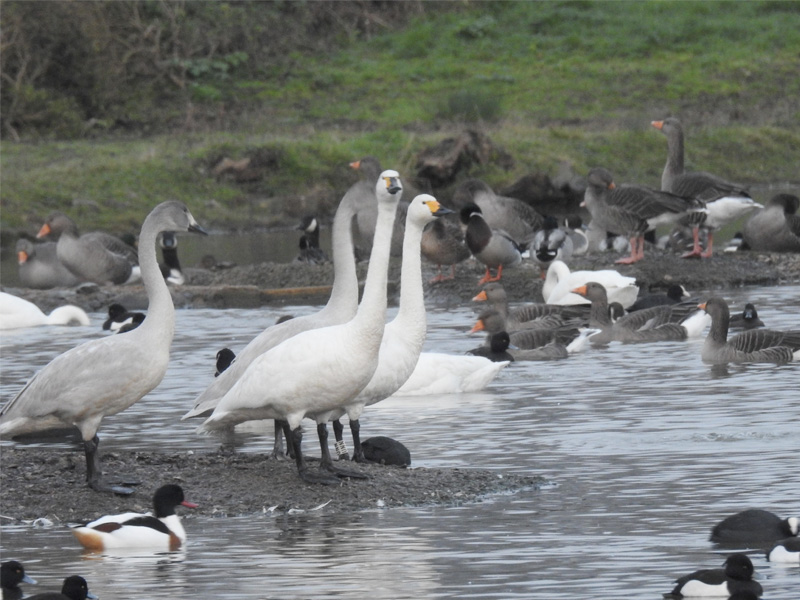'Swanfall' at WWT Slimbridge

The beginning of December has brought about the first ‘swanfall’ after a steady start at WWT Slimbridge.
Overnight on 30 November, 26 majestic Bewick’s swans arrived at Slimbridge, after completing the final leg of their autumn migration. Encouraged by the onset of winter conditions to their breeding grounds in Arctic Russia, the Bewick’s swans began their journey back in September and have since been enjoying the comforts and plentiful feeding opportunities at wetlands across Estonia, Latvia and Lithuania. Hence the slow start to the Bewick’s swan season at Slimbridge.
The appearance of so many swans in one go is called a ‘swanfall’, and marks the final stage of their epic 2,500km journey from Arctic Russia to the comparatively warmer weather of the UK. This year’s first ‘swanfall’ came almost a month after first arrivals Primero and Piquet touched down at Slimbridge on 5 November.
The ‘swanfall’ saw the exciting arrival of Slimbridge regular – Maisie, named after Slimbridge’s Reserve Warden, Martin McGill’s, daughter. Maisie arrived this year with her partner Mayfeld and their first two cygnets. At just three months old, these cygnets have completed their first 2,500km migration. Maisie first wintered at Slimbridge in 2014-15 where she was fitted with a GPS collar, therefore for a few years WWT were able to track her movements. Unfortunately during migration Maisie somehow lost the tracking collar. Maisie has been with Mayfeld since the winter of 2016-17 but this is the first time they have brought cygnets to Slimbridge.
Sir Peter Scott the founder of WWT dedicated much of his time to watching and studying Bewick’s swans. He was the first person to recognise the value of bill pattern identification as a research tool. The WWT conservation team who are based at Slimbridge have been using this technique to identify and record individual Bewick’s swans for more than 50 years, which is one of the largest conservation studies for a single species. Over that time, the comings and goings of individuals and family dynasties has led to over 10,000 swans being recorded, one of the longest-running studies on a single species in the world.
For information on the Bewick’s swans at Slimbridge and the swan team’s conservation work, visit: https://www.wwt.org.uk/discover-wetlands/wetland-wildlife/swans/swan-news
Explore Gloucestershire
15 December 2020
For further information.
OTHER NEWS
